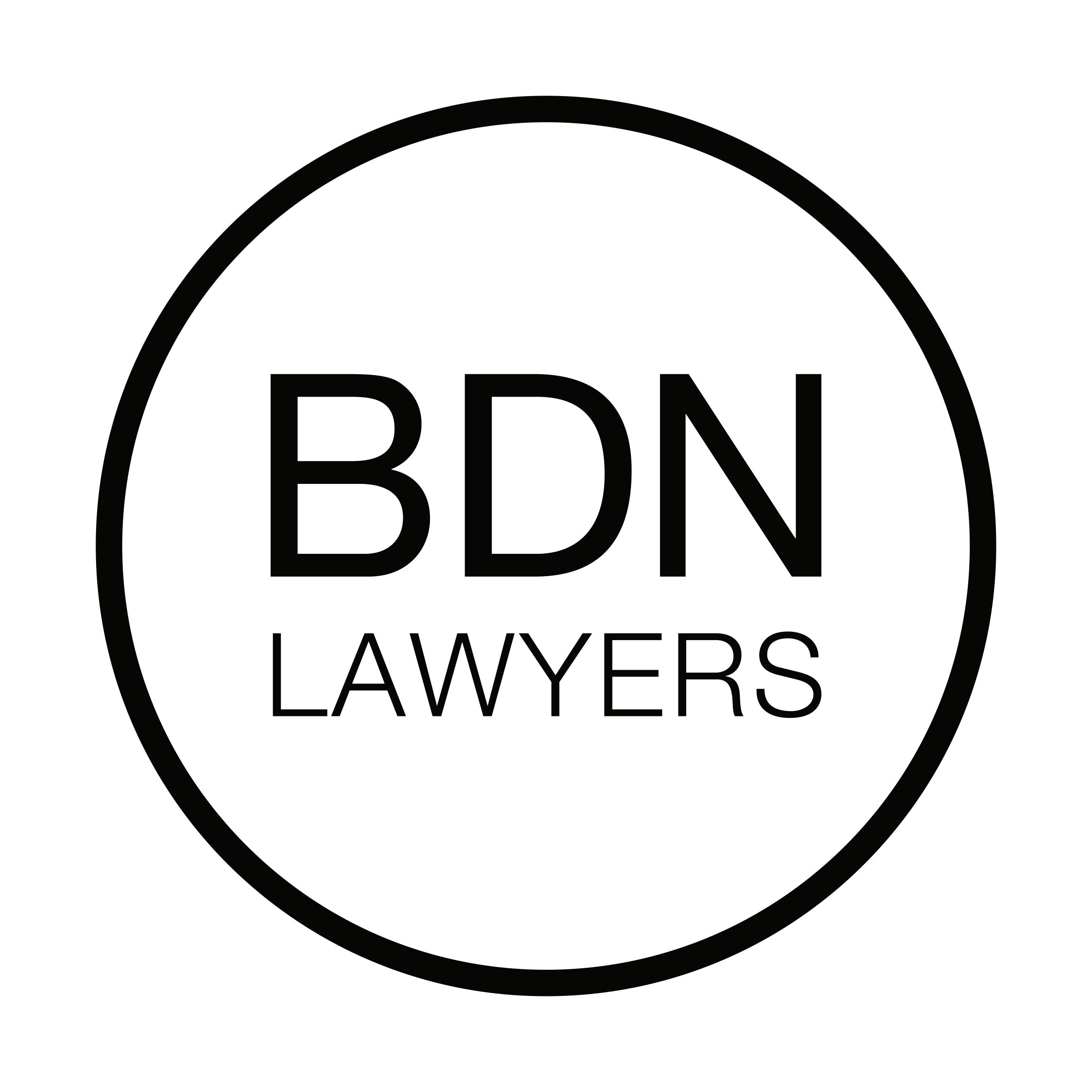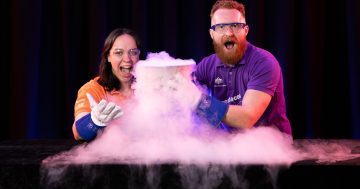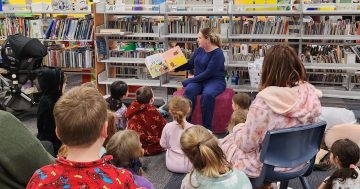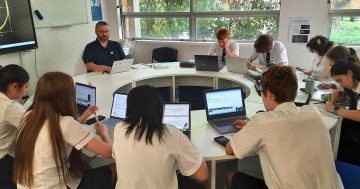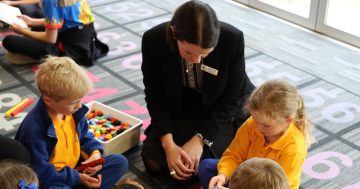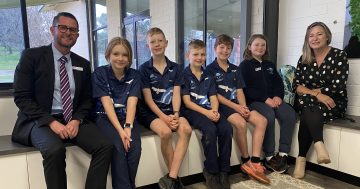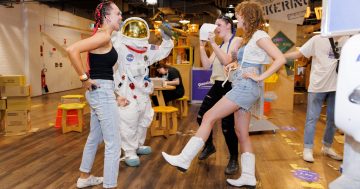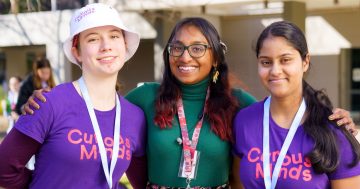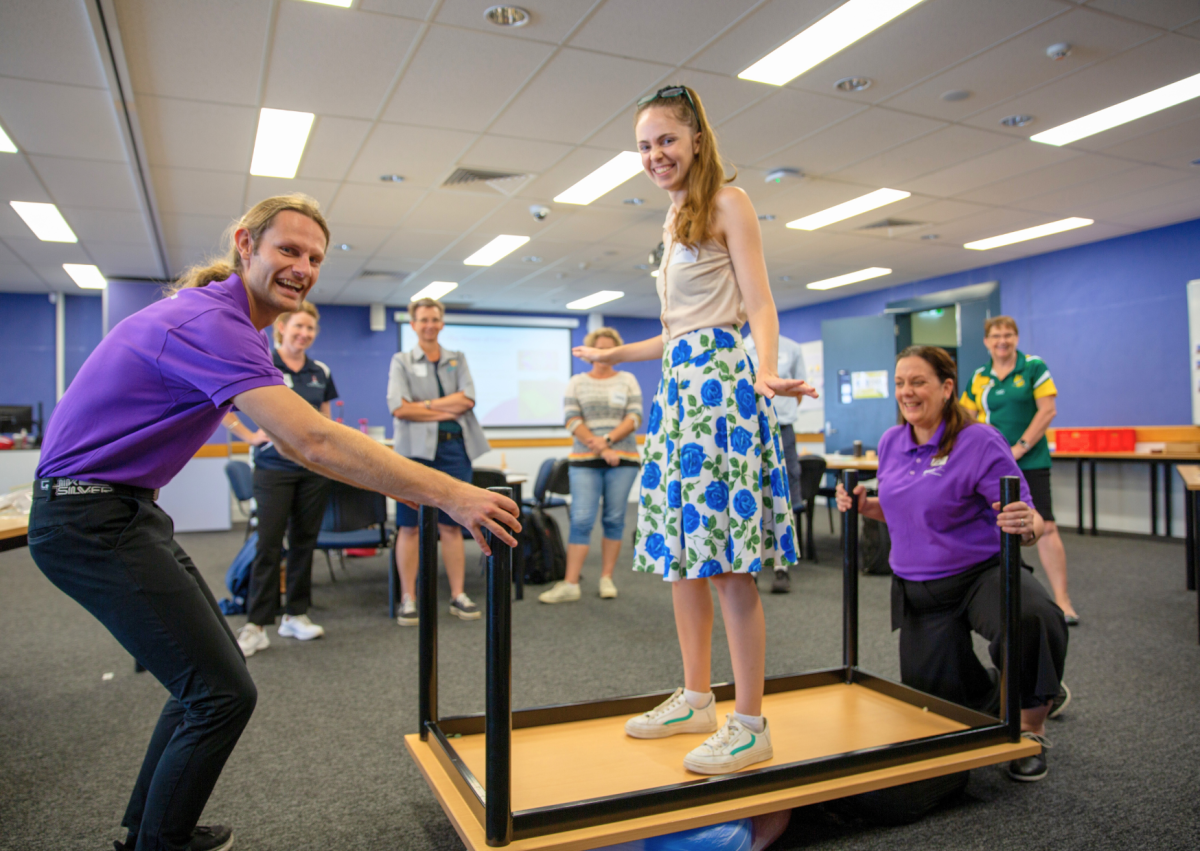
Teachers are one of our most powerful tools in advancing the country’s STEM interests. Photo: Questacon.
Empowering the nation’s teachers to ignite a spark of Science, Technology, Engineering and Mathematics (STEM) learning is a powerful tool in advancing Australia’s STEM interests, according to Questacon – The National Science and Technology Centre.
Questacon is working with teachers through Engineering is Elementary, a free hands-on professional development program designed to build educators’ confidence and capacity in their own knowledge, skills and dispositions in STEM and STEM teaching. The interactive science communication and education centre’s work is also increasing STEM learning opportunities for its students.
Questacon educator programs manager Dr Milli Styles says engineering is a “particularly useful hook” for engaging students in all areas of STEM and opening their eyes to the vast career opportunities.
“This is a subject that’s broadly unfamiliar to people – often they have an idea that engineering is used to make buildings and that’s about the extent of their understanding,” she says.
“We know teachers are the experts of their classrooms, and we know the kind of impact an enthusiastic and confident teacher can have in a student’s school experience. However, often primary school teachers must be generalists to be able to deliver a broad curriculum. With no particular deep background in science, they sometimes don’t have the confidence to bring STEM into the classroom in meaningful, empowering and engaging ways.
“Questacon is well placed to support them in growing their practice.”
Engineering is Elementary highlights the four Cs of effective engineering – critical thinking, communication, collaboration and creativity – and connects the learnings to tangible, real-world applications.
“This way students can recognise ‘This is something I can be involved in, something I can use to make a difference to my community, and it could be my future’,” Dr Styles says.
From exploring how different materials improve water filters to designing alarm circuits and building pollinators out of easily accessible materials, attendees explore engineering principles through a full day of activities and discussions, and gain exposure to diverse STEM career role models who share their personal experiences, motivations and thinking practices.
Designed for educators from primary school teachers to relief teachers, home school educators to specialist educators, the curriculum-aligned units easily adapt to different year levels and cover various types of engineering.
Participants receive time-saving, flexible strategies and a resource kit with ready-to-use materials, enabling quick and confident use in the classroom. They then join a national network of educators where they can share ideas and receive ongoing support for long-term success in teaching STEM.
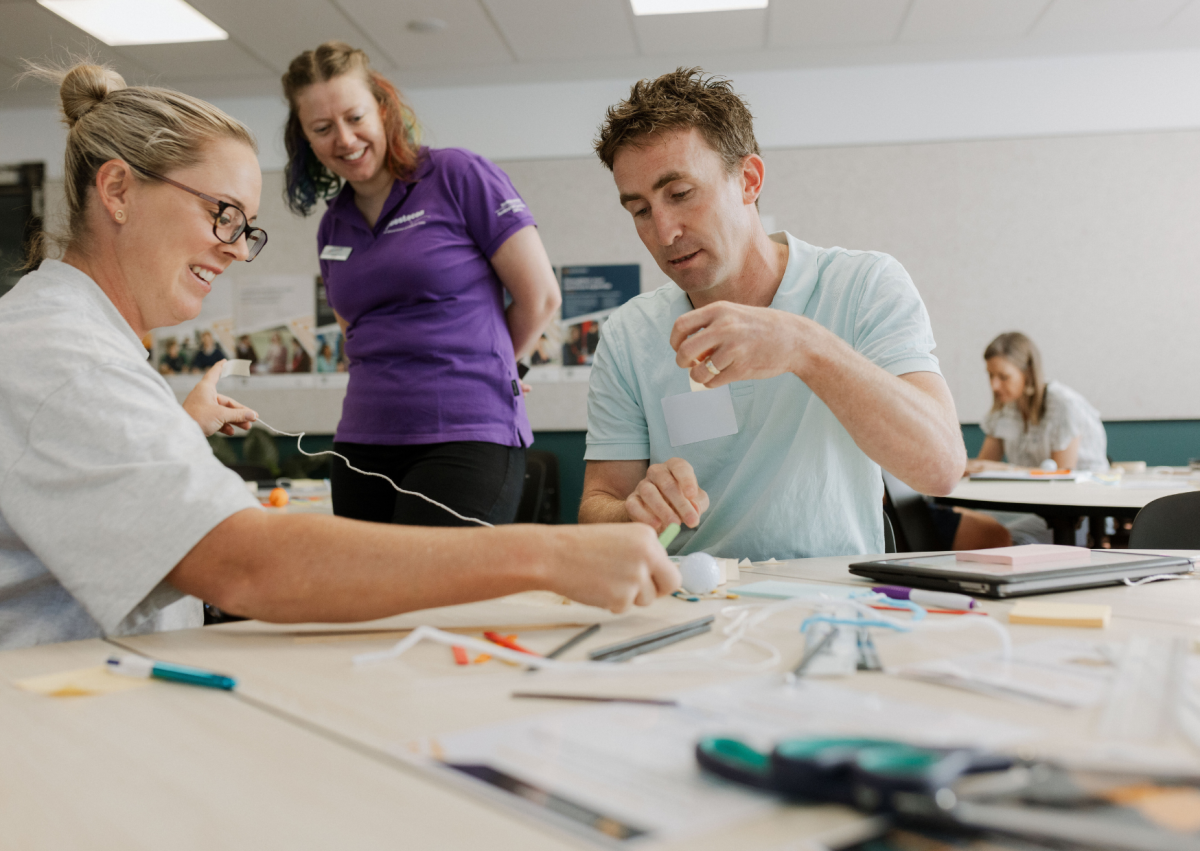
Questacon’s Engineering is Elementary program facilitates workshop experiences and resources that build teachers’ confidence and capacity to engage their students in STEM subjects. Photo: Questacon.
More than 1000 educators have engaged with the program over the past 18 months with plans to reach a thousand more over the next three years, focussing on teachers of underserved audiences including women, regional and remote communities and Indigenous audiences.
Teacher Annie Rossouw says the course is an eye-opener.
“I’m married to an engineer, and one of my children is an engineer, so I thought I had a pretty good idea of what it was. By the end of the course I realised it wasn’t as scary as I thought, nor is it as exclusively for ‘extremely clever people’. Rather, it’s a way of thinking anyone can grasp with the right guidance,” she says.
“If we can find a way to encourage our students from a young age to be open to those pathways of thinking – using creativity, imagination, collaboration and drawing on the knowledge they have, they will soon realise an engineer is simply someone who finds solutions and solves problems.”
The vast majority of Engineering is Elementary participants report significant shifts in their engineering knowledge, skills and dispositions, with 85 per cent implementing their learnings in schools and classrooms, introducing or expanding the teaching of engineering concepts, processes and topics in schools.
“One of the most valuable things I learned is that the engineer’s way of thinking is not linear – it’s more of a circle. You have a problem or question, you work it, plan, create, improve and then you start again, iterate until you find your solution,” Ms Rossouw says.
“We also learned to be aware of our disposition – are you curious, alert, present, persistent? Are you brave enough to try again when you fail? In a group scenario, can you adjust to other people’s ideas when you think yours is better?
“These are all amazing thinking tools for children, no matter what they’re working on.”
Questacon’s educator programs are supported through the Australian Government with diamond partner, Department of Defence.
For more information about Engineering is Elementary visit Questacon.





